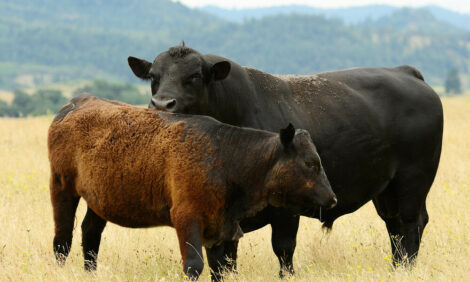



New Research Finds Many Key Resources Have Passed Their Peak
GLOBAL - As the worlds resources face enormous challenges, researchers from the US and Denmark have analysed the production and extraction rates of 27 global renewable and non-renewable resources (including fish, meat and milk) and found that many of the resources reached their peak a few years ago.Landscape ecologists Prof Dr Ralf Seppelt, Dr Ameur M. Manceur and plant ecologist Dr Stefan Klotz from the Helmholtz Centre For Environmental Research (UFZ) together with economist Dr Eli Fenichel from Yale University and sustainability scholar Dr Jianguo Liu from Michigan State University, examined 20 renewable resources, such as maize, rice, wheat or soya, which represent around 45 per cent of the global calorie intake according to the Food and Agriculture Organisation of the United Nations (FAO), as well as animal products, such as fish, meat, milk and egg.
For 18 of these renewable resources the annual growth rate (for example the increase in meat production or in fish catch) reached its peak - the peak-rate year - around 2006 a few years ago.
"For many resources, but not oil, we indeed observed a peak pattern," stated Dr Seppelt.
Surprisingly, they discovered not only that 20 resources had a peak-year but also that for 16 of the 20 resources with a peak-year, the peak-year lay between 1988 and 2008 - a very narrow range in the history of humanity.
"The key commodities that a person needs for food and must harvest are limited," summarised Dr Seppelt, Head of the Landscape Ecology Department at the UFZ.
The authors were able to illustrate that renewable resources are becoming scarcer using various examples: The maximum global growth rate in crop yields for soya beans was in 2009, for milk it was 2004, for eggs it was 1993 and for the fish caught it was 1988.
Data from other studies confirmed these results. For example, the crop yield per area with maize, wheat, soya and rice on more than a quarter of the farming area around the world is stagnating or decreasing according to the US scientists.
Dr Seppelt gave explanations for why many of the peak-years are synchronized – they occur at about the same time. The global population growth is a major driver. Due to the rising population and change in diet in some regions of the world over the past few decades, such as India and China, the demand for renewable resources increased and thus the pressure to produce as much food as possible.
These findings can also be illustrated in other aspects of resource use, as the team found the highest rate of increase in the cultivation of arable land to be in the 1950s; the peak for human-made irrigation areas then followed in the 1970s, and the peak for nitrogen fertilisers was subsequently in the 1980s.
"This shows that the land available for agriculture was used more intensively for growing food," concluded Dr Klotz, Head of the Department of Community Ecology. However, they can no longer see major opportunities for the intensification of farming.
"Experts see opportunities for further increases in agricultural yield of about one to two per cent per year due to better breeding techniques and genetically modified organisms," stated Dr Seppelt. But then it will be tight. "The global community needs to accept that renewable raw materials are also reaching their yield limits worldwide."
Not all resources have passed their peak-year however. For example, fish obtained from aquaculture is an expanding resource. However, Dr Seppelt believes "the environmental cost of aquaculture is hotly debated."
Conclusions of global relevance can be drawn from the study. "We are facing enormous challenges that affect the majority of the resources that we use," stated Dr Seppelt.
Indeed, the synchrony of peak-years casts doubts on the notion that as resources become scarcer or less accessible, they can be replaced by other resources ad infinitum. As the foundation of humanity’s current standard of living is eroding, it becomes essential to take action by using fertilizer and water more efficiently for example.
TheCattleSite News Desk


